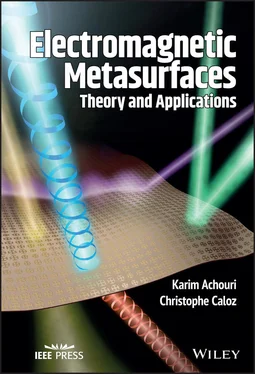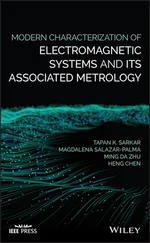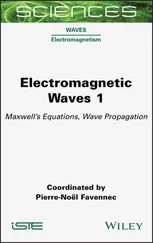The origin of the term metamaterial can be traced back to a 1999 DARPA 1Workshop [183], where it was introduced by Rodger M. Walser to describe artificial materials with electromagnetic properties beyond those conventionally found in nature [25, 29, 41, 165]. Obviously, the concept of artificial electromagnetic structure has existed long before the appearance of the term metamaterial. One of the most well-known and ancient examples of metamaterials is that of the Lycurgus cup, dating to the fourth century AD, which is a type of dichroic glass like those used in the conception of stained glass. Back then, the optical properties of glass were tuned by adding various types of metallic powders during its fabrication process but the lack of proper understanding of the interactions of light with matter meant that these processes were essentially made by trial and errors [145].
It is only much later, in the second part of the nineteenth century, that people became properly equipped to study and control the propagation of electromagnetic waves thanks to the newly established theory of electromagnetism of Maxwell [100]. Soon after, near the end of the nineteenth century, Bose introduced what was probably one of the first examples of artificial electromagnetic structures in the form of a polarization rotator made of twisted jute that was supposed to imitate the chiral response of some sugar solutions [20]. Similar types of chiral responses were also introduced by Lindman in the 1910s and 1920s using spiral-shaped resonating structures [94]. The concept of “artificial dielectrics” was then pioneered by Kock in the 1940s, which originally consisted in inserting metallic patches inside layered metal–dielectric media. Based on this principle, Kock realized the first-known artificial microwave delay lens [79]. During the same period, split-ring resonators were proposed by Schelkunoff and Friss as a mean of controlling the permeability of artificial materials [144].
Until the middle of the twentieth century, artificial electromagnetic structures were mostly used as a means of achieving desired values of permittivity, permeability, and chirality within reasonable ranges. It is only since then that more extreme material parameters started to be investigated. For instance, artificial materials with a refractive index less than unity were introduced by Brown in the 1950s [22] while, in the 1960s, Rotman associated the response of wire media to that of conventional plasma [141]. In 1968, Veselago mathematically described the response of materials exhibiting both negative permittivity and permeability and demonstrated that such material parameters would correspond to a negative index of refraction [170]. Later, during the 1980s and 1990s, important theoretical and practical developments were made toward the realization of bianisotropic media and microwave absorbers [165]. However, it is only after the beginning of the twentieth century that the field of metamaterials really started to attract massive attention. It is notably due to the first experimental demonstration by Shelby et al. [150] that a negative index of refraction was indeed feasible and the associated concept of the perfect lens imagined by Pendry [120]. The interest in metamaterials grew even more when, in 2006, Pendry and Smith proposed and realized the concept of electromagnetic cloaking, based on transformation optics [121, 146].
At the beginning of this section, we provided a very general and broad definition of metamaterials. To be more specific, we shall now define more rigorously what we mean by a metamaterial. Throughout this book, we will consider that a metamaterial is an artificial structure consisting of an arrangement, usually periodic, of scattering particles. The effective physical size of these scattering particles, as well as the distance between them, must be smaller than that of the wavelength of the electromagnetic wave interacting with them. This prevents the existence of diffraction orders or Bragg scattering due to the lattice period and allows the metamaterial structure to be homogenized into effective material parameters. Note that this condition implies that photonic crystals [71] and electromagnetic band-gap structures [174], which typically exhibit unit cell size larger than that of the wavelength, cannot be considered to be metamaterials since it is impossible to describe them in terms of effective material parameters. The effective material parameters of a typical metamaterial stem from the combined effects of the chemical composition, the shape, and the orientation of their scattering particles. From a general perspective, the scattering particles may be composed of metal or dielectric materials; they may be resonant or non-resonant structures; they may be active, lossy, nonlinear, and even time-varying or contain electronic circuitry.
1.2 Emergence of Metasurfaces
Although the interest in metamaterials was at its peak in the first decade of the twenty-first century, it is their two-dimensional counterparts – the metasurfaces – that progressively became the dominant source of attention. The main reason for this sudden rise in interest is explained by the fact that metasurfaces are easier to fabricate, less bulky, and less lossy than conventional volume metamaterials [48, 57, 58, 105].
While the interest in metasurfaces only became substantial in recent years, the conceptual idea of controlling the propagation of electromagnetic waves with thin artificial structures is more than 100 years old. One of the earliest examples of this concept was most likely proposed by Lamb, at the end of the twentieth century, who investigated the scattering properties of an array of metallic strips [87]. This was soon followed by the polarization reflectors made by Marconi in the 1910s. However, the most important progresses in this area were made in conjunction with the development of the radar technology during World War II and which continued through the 1950s and the 1960s leading to a rich diversity of new systems and technologies. We illustrate some of these systems in Figure 1.1. For instance, Figure 1.1adepicts a Fresnel zone plate reflector, typically used in radio transmitters [23], whose working principle is based on the concept of the Fresnel lens already pioneered 200 hundred years ago. Figure 1.1billustrates another very well-known operation, which is that of the frequency-selective surfaces used as microwave frequency filters [110, 139]. Then, Figure 1.1crepresents a rather modern version of a reflectarray antenna (or reflectarrays) [61, 98, 107], whose technology, dating back to 1970s, consists of an array of microstrip patches implementing the functionality of conventional parabolic reflectors. Note that the first types of reflectarray antennas were designed using short-ended waveguides instead of microstrip patches [17]. Finally, Figure 1.1dillustrates the working principle of a transmitarray, the transmission counterpart of a reflectarray, which appeared already in the early 1960s [75, 101, 160]. This kind of systems was typically made of an array of receiving and transmitting antennas connected to each other by a delay line, whose phase shift could be tuned to shape the wavefront of the transmitted wave. Later, in the 1990s, microstrip patches were proposed as potential replacement for the interconnected antenna array used to implement transmitarrays [34, 86, 132]. However, the transmission properties of microstrip patches were then plagued with low efficiency as their phase shifting capabilities could not reach the required  -phase range. It is only around 2010 that efficiency transmitarrays able to achieve a
-phase range. It is only around 2010 that efficiency transmitarrays able to achieve a  -phase shift range were demonstrated [44].
-phase shift range were demonstrated [44].
Читать дальше

 -phase range. It is only around 2010 that efficiency transmitarrays able to achieve a
-phase range. It is only around 2010 that efficiency transmitarrays able to achieve a  -phase shift range were demonstrated [44].
-phase shift range were demonstrated [44].










